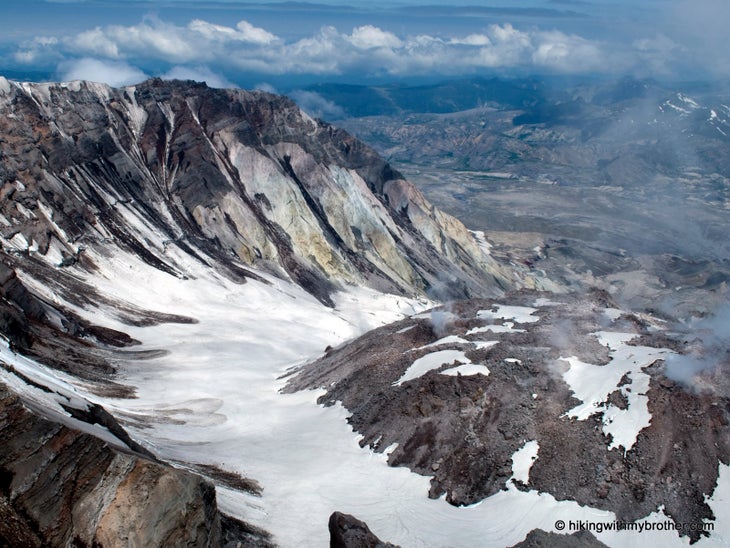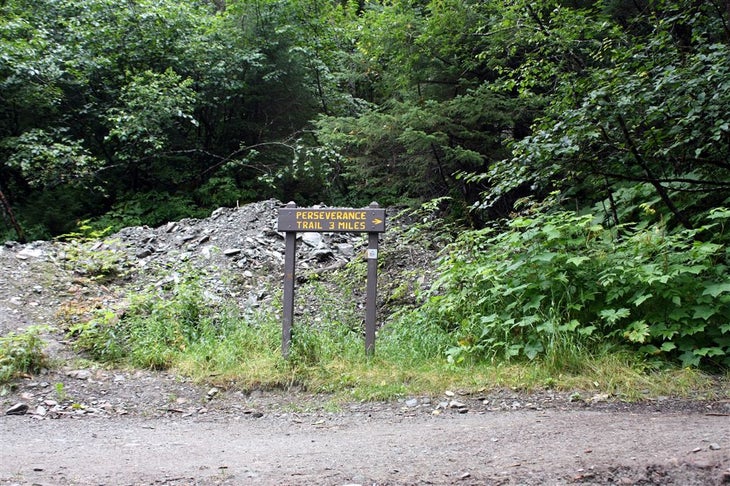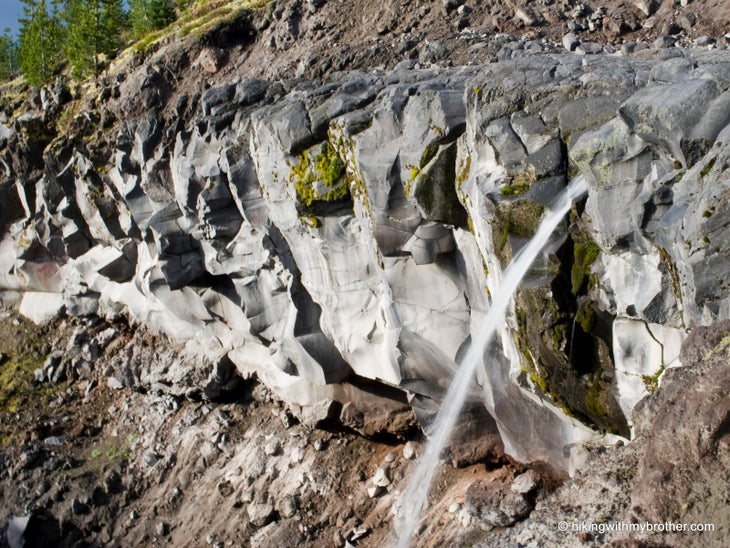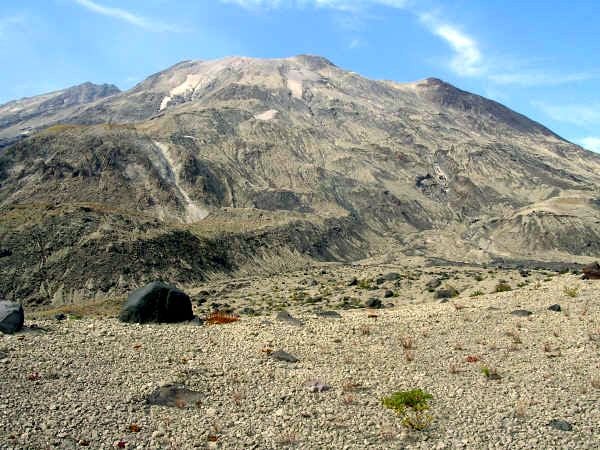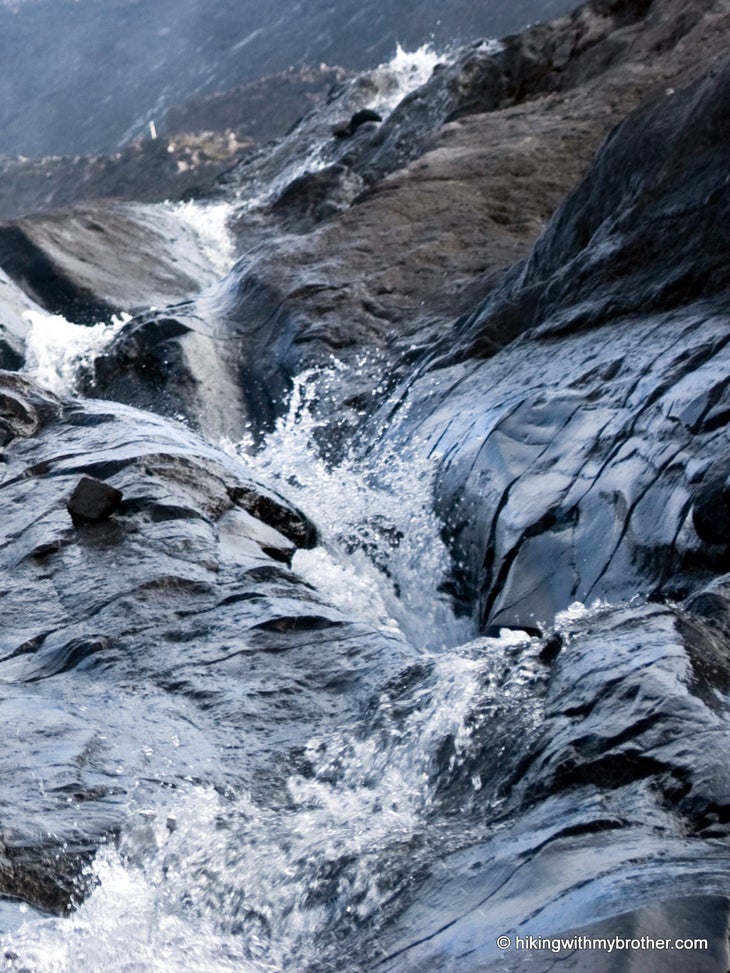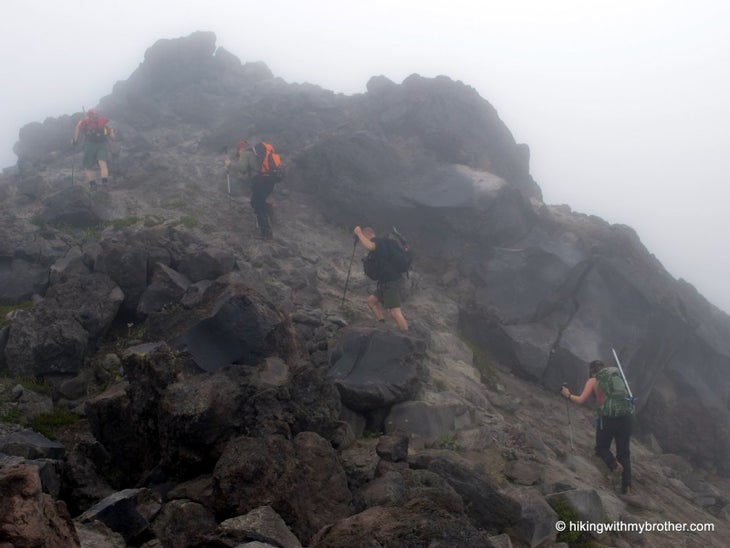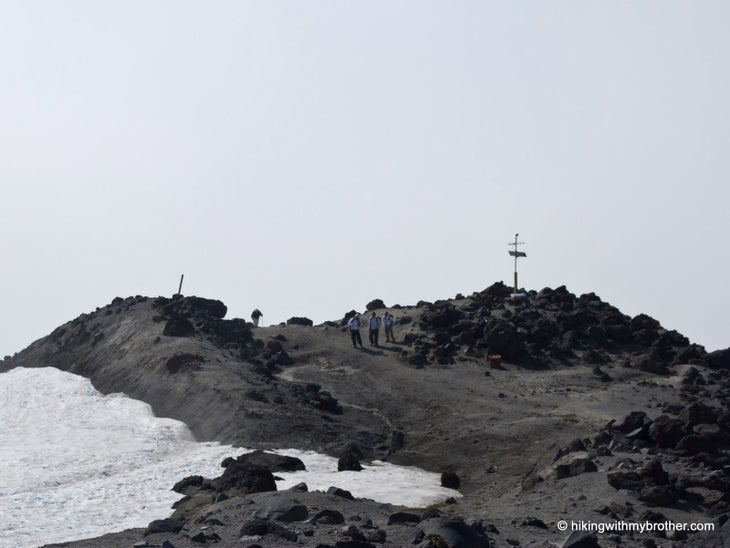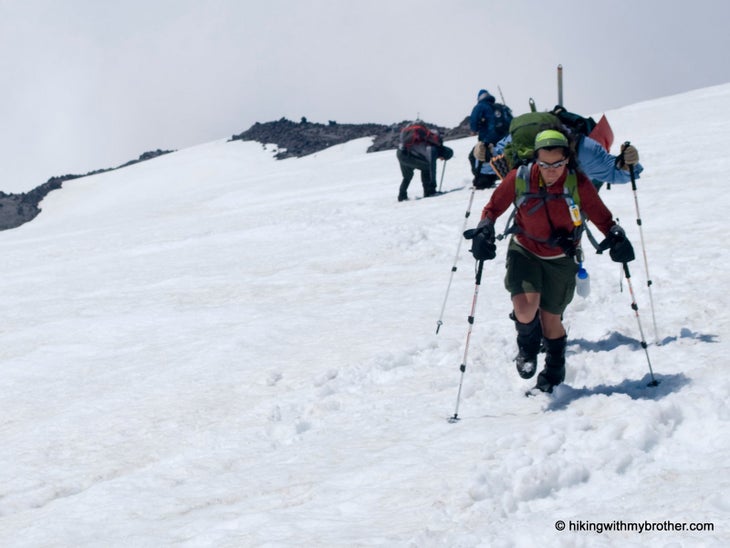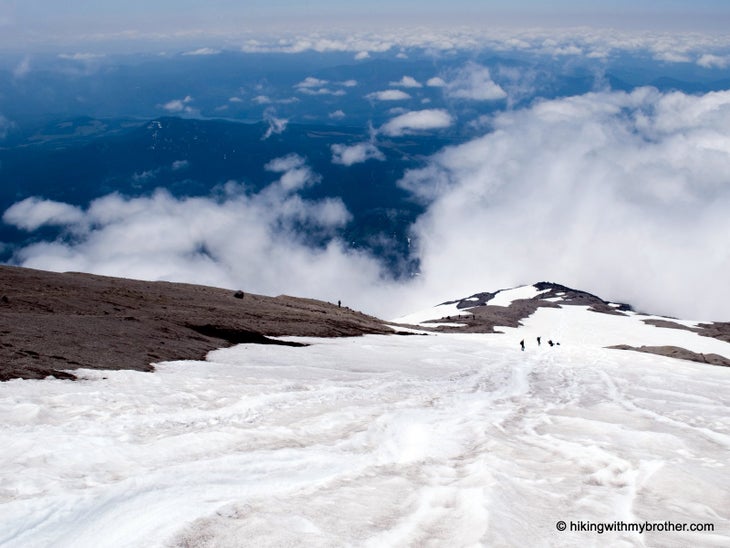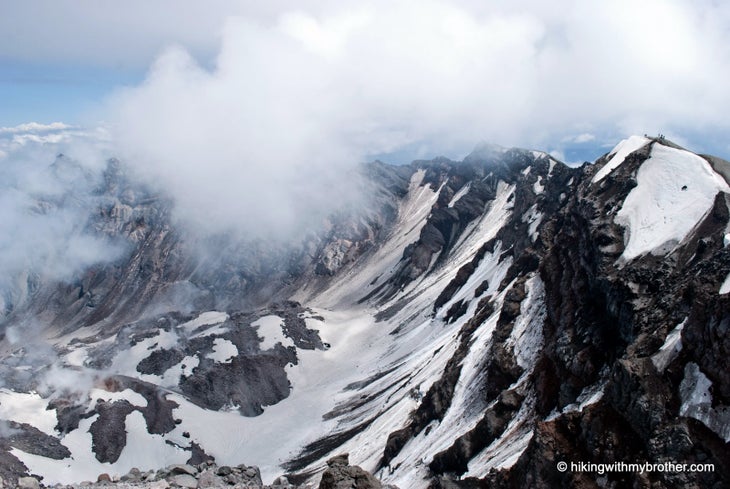Heading out the door? Read this article on the new Outside+ app available now on iOS devices for members! Download the app.
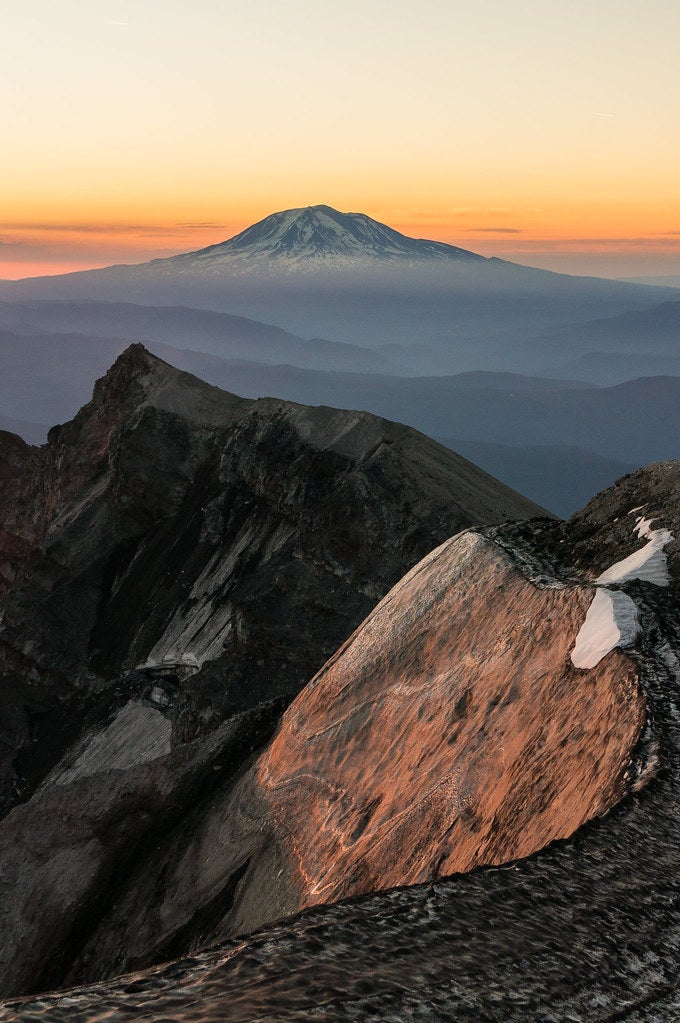
Named for the rivers of rocky lava that surround the trail, the 10.8-mile Worm Flows route ascends nearly 5,700 feet to the summit of Mount St. Helens. Although challenging, this standard winter and spring route provides a non-technical climb for experienced hikers craving sweet summit views and a chance to practice basic mountaineering skills.
Start at the Marble Mountain Sno-Park and follow the cross-country ski trails through forests of Douglas fir (bleached stumps and fallen logs still clutter the forest floor) to Chocolate Falls, a 40-foot waterfall roughly 2 miles in. From here, the trail crosses an increasingly barren landscape of mudflows and rock, where large posts and occasional cairns mark the way. Navigate through the jumbled lava flows, then push beyond cloud level toward St. Helens’ false summit. (On clear days, scan the horizon for Mount Adams and Mount Hood.)
The route crests the crater’s crescent-shaped rim at mile 5, which reveals dramatic views of Spirit Lake and Mount Rainier. (Make sure to look down into the caldera—the lava dome burps clouds of steam and sulfur into the air.) Take in the scene, then continue west along the rim to the true summit, a mound of rocks at 8,365 feet. Savor more sweet views before turning around for the return trip back to the trailhead.
Caution: The ash and loose gravel that covers the trail is slick. Depending on the conditions, consider using crampons along the snowy stretches.
-Mapped by Nathan and Jeremy Barnes, hikingwithmybrother.com
